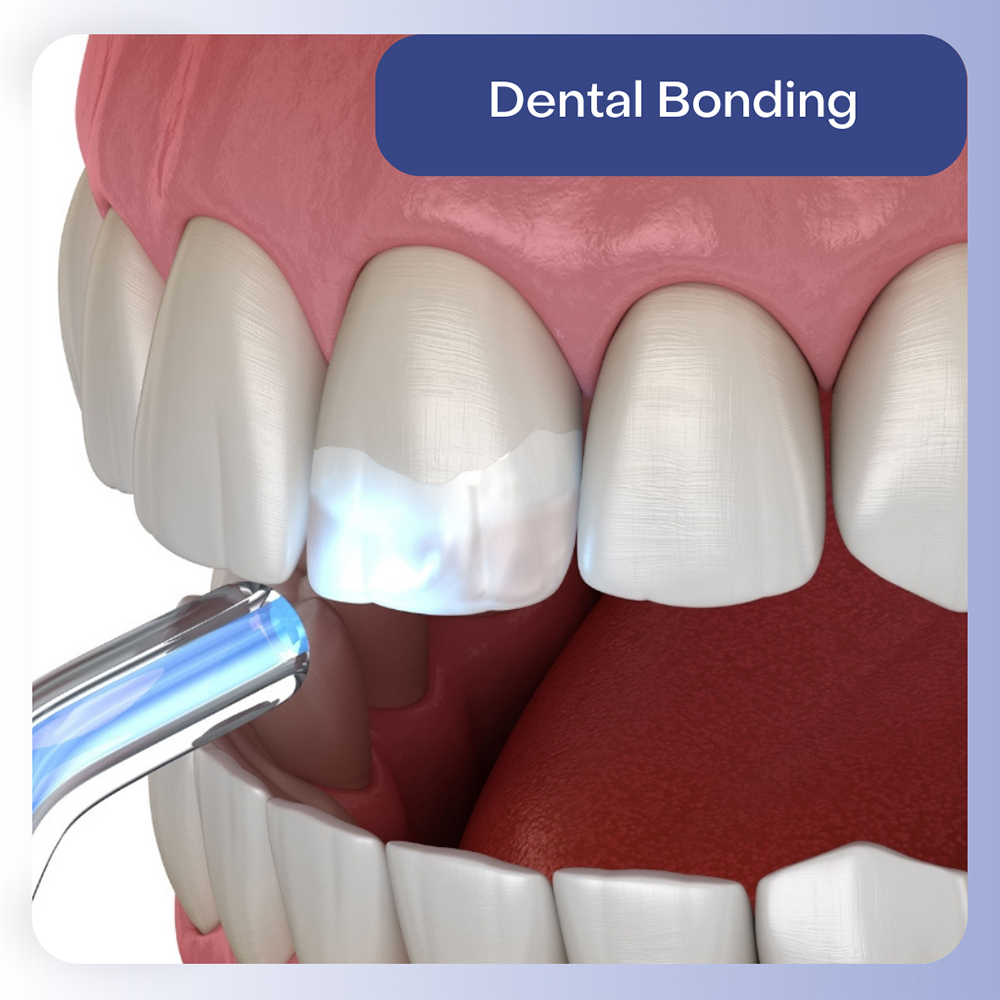Table of contents
Dental bonding can fix small chips or cracks in teeth or other minor imperfections that can affect an otherwise attractive smile. Dental bonding is a fast, affordable, and minimally invasive cosmetic dentistry procedure.
This treatment is also called teeth bonding and uses tooth-colored composite resin to mend or hide small faults or damage affecting a tooth’s appearance. The material can also change a tooth’s overall shape, size, and appearance.
 Treatment is versatile and used in numerous situations, including the following:
Treatment is versatile and used in numerous situations, including the following:
Composite resin is the same material used to fill small to medium-sized cavities in teeth, creating nearly invisible restorations. The material is durable and hard-wearing. It is also biomimetic, so it works harmoniously with your teeth and bonds strongly to natural tooth structure.
We frequently use cosmetic dental bonding at My New Jersey Dentist. Treatment can be completed in a single visit and can subtly enhance the appearance of teeth without making any major changes.
These two procedures are different:
Dental bonding offers several benefits compared with other cosmetic dental treatments.
Before recommending this treatment, we will assess your oral health and discuss your treatment goals. Dental bonding will not last as long as other treatments like porcelain veneers, and the material can become stained over time, but it is very affordable.
Dental bonding works extremely well when only a few teeth need to be treated. If you wish to make more substantial changes to the appearance of your teeth, you may prefer an alternative treatment such as porcelain veneers.
We must also ensure your teeth and gums are generally healthy, and we might wish to take dental x-rays to assess areas like tooth roots or contact areas between teeth that are hidden from view. Any cavities or gum disease must be treated first. A healthy mouth will help ensure the results last longer.
Treatment takes place in several easy steps outlined below.
Your teeth should soon feel completely comfortable afterward. Some people find their teeth are slightly more sensitive after treatment. This is a common side effect after dental procedures and should disappear quite quickly. In the meantime, any discomfort is easily controllable with over-the-counter painkillers.
Good oral care will ensure your dental bonding stays looking good for longer. Brush at least twice daily using a soft-bristled toothbrush and fluoride toothpaste. Regular checkups and hygiene appointments allow us to clean your teeth and restorations like dental bonding professionally.
Treat teeth that have been bonded as gently as your natural teeth. Avoid biting your nails, pencils, or other hard objects; otherwise, the composite resin might become chipped and need mending or replacing.
Dental bonding will last several years, but this material is less durable than porcelain. It is also less stain-resistant, so it can begin discoloring over time but can be easily replaced. You can expect the results to last anywhere between three and ten years before you need to consider replacing them.
Dental bonding is often combined with Odontoplasty or enamel reshaping. During this procedure, a small amount of tooth enamel is removed, for example, if a tooth is slightly overlapping or cracked. Combining both treatments can help create a more appealing tooth shape without making any major changes.
Modern composite resins can look very natural when skillfully applied by a cosmetic dentist. Treatment is ideal for anyone who does not wish to spend too much money on improving the appearance of their teeth. It is also good for anyone who would prefer or only needs to enhance smile subtly.

My name is Victoria Kushensky. I am a general dentist dedicated to remaining at the forefront of my field. Combining compassionate care with extensive knowledge, I offer cosmetic and general dentistry services as well as advanced root canal treatments.
I earned my Doctor of Dental Surgery (DDS) degree from the esteemed New York University College of Dentistry. Throughout my career, I have honed my skills in various dental procedures, ensuring effective treatment for each patient’s unique needs. I prioritize patient comfort and understanding, taking the time to thoroughly explain procedures and address any questions.
More about Dr. KushenskyMy NJ Dentist: Victoria Kushensky, DDS
385 Prospect Ave Suite 304
Hackensack, NJ 07601
(201) 298-8000